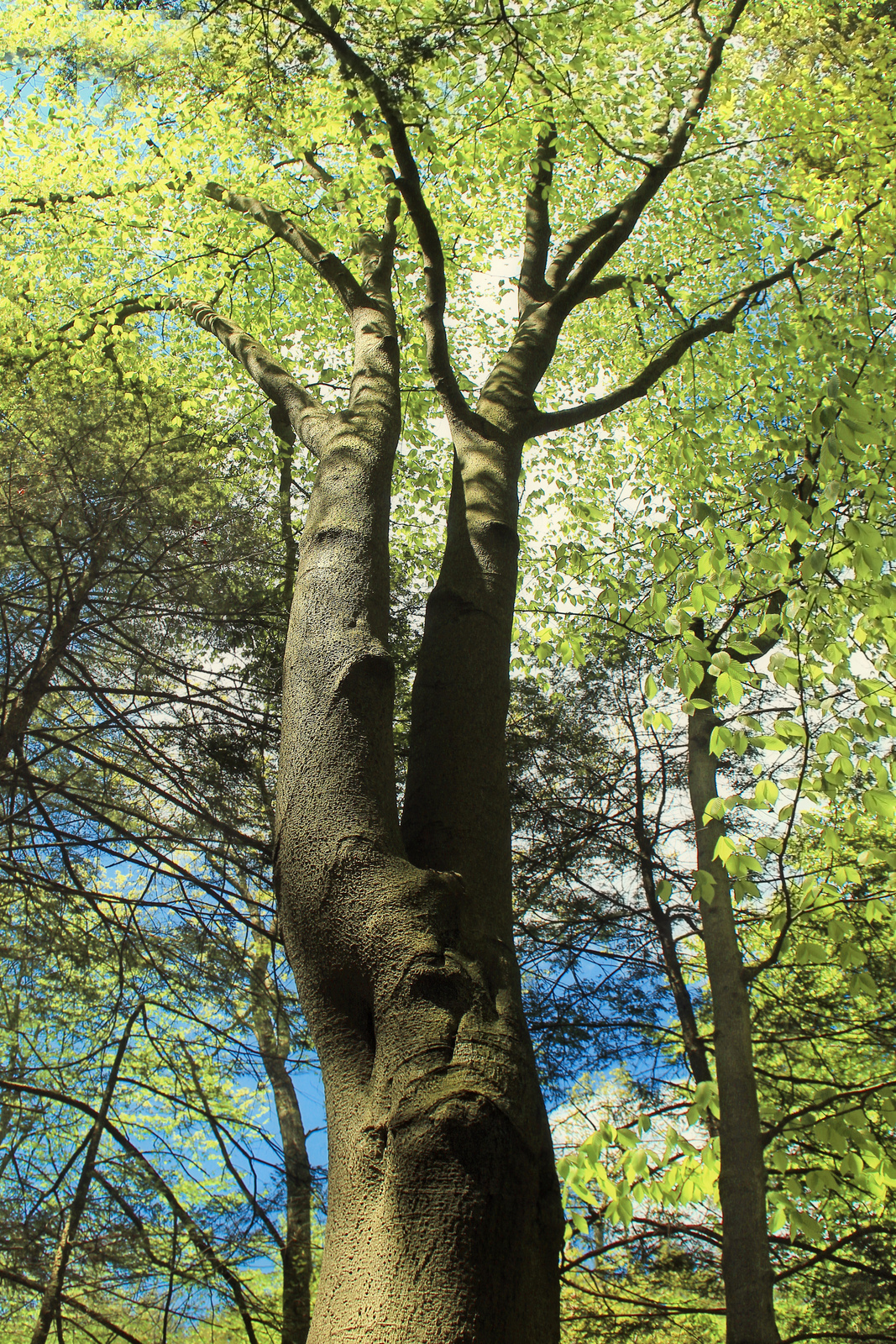American Beech : The Beech Tree in Europe
To broaden our scope and examine the genus Fagus, we find great cultural history of the beech tree in Europe. According to the Order of Bards, Ovates, and Druids, the European Beech, or Fagus Sylvatica, is considered “the mother of the woods” and has also been called the “Beech Queen,” whose partner is the “Oak King”. The high arching branches of the beech have been said to have inspired the grand arches of cathedrals. The beech is renowned in Europe for her generous spirit, providing protection, nourishment, and good fortune to those who carried pieces of her as good luck charms.
The ancient druids believed the beech tree had magical powers; whatever words were inscribed into beech bark took on the power of the gods. Writing a wish on a bit of beech and then burying it was part of giving back to the earth and making the wish manifest in real life, if it was meant to be. The tree has also been credited by this group to connect them with their ancestors, serving as a means to pass knowledge and wisdom from the ancients to living family members.
The beech tree is associated with gods of wisdom and learning, like the Irish god Ogma. Ogma, also known as the Celtic Hercules, was a warrior poet and the creator of the Ogham alphabet who wrote upon the beech. Ancient druids used the ogham alphabet for divination and as a method to teach spoken traditions. The ogham letters “XI” and “AE” have the Celtic name “Phagos” and are associated with the beech tree. Very little has been written concerning the myths of Ogma, but it is known that Ogma was famous for his eloquence.
For practical usage, the European beech was used during the Middle Ages to blow glass. The ash of beech wood contains potash and lime, components needed to make leaded glass. Glass manufacturers often built factories near beech groves like the Forest of Argonne, a wood supply center for French glassmakers dating back to the 15th century. In addition to the creation of decorative glass pieces, beech trees were a large contributor in the production of leaded glass windows during this period.

